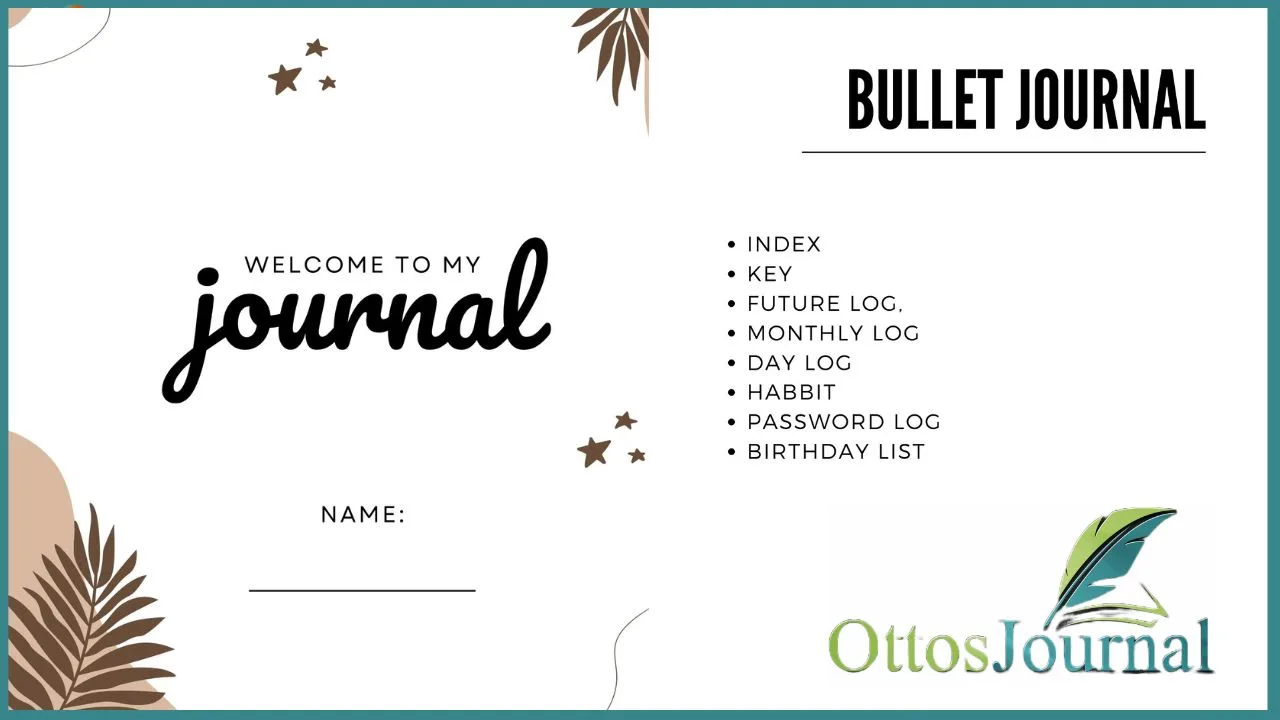Bullet journaling is a great way to organize your thoughts and improve productivity. It can help you stay focused on important tasks, keep tabs on projects, and keep track of deadlines. However, if you’re new to bullet journaling it might seem overwhelming. That’s why it’s important to start with a minimalist approach that keeps things simple and manageable. In this article, we’ll go through the basics of how to start a minimalist bullet journal and provide some tips for making it successful.
How to Get Started with Minimalist Bullet Journal
Choose the Right Notebook
The first step in the minimalist bullet journal method is to choose the right notebook. Look for one that’s lightweight, has enough pages to last you through your projects, and has features like numbered pages or an index that will help keep things organized.
Gather Supplies
Once you have chosen a bullet journal notebook, gather all of the supplies you need. This includes pens and pencils, washi tape, colored markers or highlighters, post-it notes (or other sticky notes), and any other tools that can help make your bullet journaling easier.
Set up Your Layout
Next, it’s time to set up your layout so everything looks neat and organized. Start by creating a key of symbols that will be used to indicate different tasks in your minimalist bullet journal system. Also, create an index page so you can easily find the information you need when needed.
Plan Your Pages
Now it’s time to plan out what bullet journal key pages you want in your minimalist journal. Decide what types of trackers or lists are important for your needs and make sure they fit into your minimalist design. You may also want to set up pages for ideas, notes, and quotes if desired.
Choose Writing Tools
As mentioned before, having the right writing tools is essential for successful bullet journaling. Whether you prefer pens or pencils, select colors that work best for you and rotate them as needed.
Create the Perfect Workflow
A perfect workflow is essential for successful minimalist bullet journal pages. Set up your pages so they are easy to access and make sure you have a way of tracking tasks, deadlines, appointments, and other important items.
Develop a Habit
Bullet journaling can easily become overwhelming if you don’t develop a habit of using it every day. Make sure to set aside time each day for your bullet journaling so you get into the flow of things more quickly and efficiently.
Focus on Quality, Not Quantity
When creating your minimalist bullet journal spreads, it’s important to focus on quality over quantity. Don’t feel like you need to fill every page with something; instead, add content when it’s necessary and keep things simple and consistent throughout the journal.
Use Shortcuts
Make use of shortcuts to save time and effort when possible. For example, if you’re writing out dates or numbers in lists often, create a template page that you can quickly copy and paste into each new list.
Minimalist Bullet Journal Ideas and Inspiration
- Set up a weekly or monthly calendar tracker that’s easy to follow and includes only the most important events.
- Create a goal/habit tracker, where you can check off tasks when they’re completed.
- Keep track of your budget with expense lists or charts that help you visualize how much money you have coming in versus going out each month.
- Jot down ideas for projects, stories, blog posts, etc., using Post-it notes or other sticky notes as markers for each item on your list.
- Make use of minimalistic color coding to organize different topics in your bullet journal (e.g., red for work projects, and blue for personal goals).
- Put together a list of books you want to read, movies you want to watch, or other items you’d like to check off your bucket list.
- Track your progress on long-term projects with monthly or weekly spreads that give you an overview at a glance.
- Use washi tape and colored markers to add visual interest and color coding for easier navigation through the pages.
- Summarize key points from meetings or lectures by writing down bullet points as they happen in real-time.
- Add quotes, affirmations, or words of wisdom to help motivate and inspire yourself throughout the day or week ahead.
- Set up reminder boxes with post-it note reminders for important tasks that need to be completed in your future log.
- Create habit trackers for physical activities, such as walking or running a certain number of miles each day.
- Track daily moods in a timeline-style spread with color coding and symbols to help you understand your emotions better over time.
- Brainstorm creative ideas by writing them down on Post-it notes and sticking them around the edge of the page as a reminder later on.
- Put together weekly spreads with blocks of time set aside for different tasks, goals, and projects so you can stay focused and productive throughout the week.
- Note down things that make you happy or think positively about yourself in a gratitude journal section of your minimal bullet journal.
- Keep track of meetings and calls with a simple list or calendar reminder page to stay organized and on top of everything.
- Use charts and graphs to get an overview of progress made each week in different areas, such as fitness, work, or personal goals.
- Track sleep patterns so you can adjust your schedule accordingly if needed for optimum productivity levels throughout the day.
- Make use of mind maps when brainstorming ideas or projects so you can see all the details at a glance in one place.
How to Organize Your Minimalist Bullet Journal
Group your pages
Separate your pages into categories like ‘goals’, ‘notes’, and ‘tasks’ to make them easier to find when needed.
Label your pages
Make sure each page is labeled clearly so you can quickly refer back to it without spending too much time searching for what you need.
Color-code your spreads
Use a color-coding system as a way of organizing and referencing different topics in an efficient manner. This will help keep things neat and organized while still looking aesthetically pleasing.
Utilize post-it notes
Post-it notes are great for marking specific tasks or events without taking up too much space on the page. You can also use them to quickly add content that doesn’t need to be permanently added to your minimalist bullet journal key pages yet.
Create a master task list
Create a master task list in your minimalist bullet journal page as a way of keeping track of all the tasks you need to complete and prioritizing each one accordingly for maximum efficiency.
Use symbols
Symbols are great for quickly referencing certain types of information in your bullet journal, so create your own set of symbols and use them consistently throughout the pages.
Make use of templates
If you find yourself writing out the same type of information often, make use of templates and save time by copying and pasting into each new list. This will also help keep the overall look and feel of your bullet journal consistent.
Tips to Make Your Minimalist Bullet Journals a Sucess
Start slow
Take your time when getting started and don’t feel the need to fill every page with something right away. You can add content as you go along and get into a routine more easily this way.
Keep it simple
Try to keep your bullet journal as simple as possible while still achieving the desired effect, so use minimalistic designs and colors that won’t overwhelm you when looking at them.
Have fun
Bullet journaling is supposed to be enjoyable, so don’t take it too seriously and have some fun with it! If things aren’t going quite according to plan, just start again – there are no rules when bullet journaling!
Track your progress
Keep track of how you’re doing with various tasks and goals by writing them down in your bullet journal to help stay motivated. You can even set up a habit tracker to see if you’ve been sticking to certain habits over time.
Use it as a creative outlet
Bullet journaling isn’t just about organizing tasks, but also expressing yourself creatively as well – so make use of the blank pages and let your creativity flow!
Bottom Line
Bullet journaling is a great way to stay organized and productive, while also allowing you to express yourself creatively.
With a minimalist approach, you can create a bullet journal that achieves everything you want it to without becoming overwhelming or cluttered.
By following the steps outlined above, you should be able to get started with your own minimalist bullet journal in no time!
Happy Bullet Journaling!





